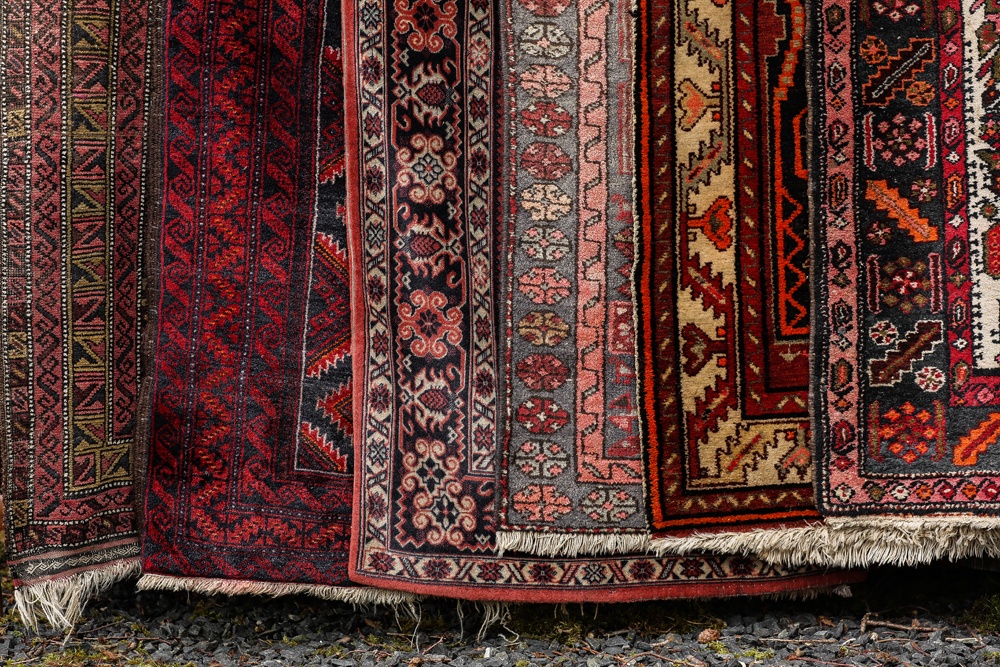What’s so special about Persian Rugs?
The meticulous work of skilled Persian rug-makers took months, if not years, to create their exquisite creations. The basic techniques of rug-making are passed on from generation to generation.
Persian rug weavers use a wide range of colors to create their rugs. Natural materials are used to extract the dyes.
It’s easy to see that Persian rugs use a mixture of vivid and bright colors. Oriental rugs, on the other hand, are more diverse in color.
Unique Aspect Of Persian Rugs
One of the most distinctive aspects of Persian rugs is the unique patterns and motifs each region uses in its rug design.
This is why you will find so many Persian rugs, each made in different parts of Iran.
All Persian rugs are made from high-quality materials that come only from natural resources, regardless of the region’s colors and styles. Only wool, silk, and cotton are used.
You can use each material by itself or together. A Persian rug made from nylon acrylic, viscose, polypropylene, or other synthetic material will not be found.
How does the Knot Count impact the price of a Persian rug?
The knot count is an essential aspect of Persian rugs. The price of a Persian rug is primarily determined by its knot count. It is important to remember that the knot count does not affect the quality.
All Persian rugs are of high quality. The rug’s price is not affected by the knot count. Higher knot counts are generally more expensive. It takes longer to weave more knots per square inch.
Although Persian rugs are more expensive, they can be a great investment. They will appreciate over time with proper maintenance. Catalina Rugs only keeps authentic Persian rugs from different regions of the country.
What is a Persian Rug?
Persian rugs stand out in craftsmanship, execution, design style, knot style, and materials and dyes. They are distinguished from all other Oriental rugs because of their superior quality.
Persian rug designs are named for the city, tribe, or village where they were made. Persian rug can only be called Persian if it was made in Iran.
What is an Oriental Rug?
Oriental rugs are always hand-woven. These rugs are not Oriental rugs if they are machine-made.
They are beautiful, with stunning patterns and striking colors. But they can’t be called ‘oriental rugs’.
Oriental rugs are defined as hand-woven rugs.
People might associate Persian Rugs with the story Aladdin’s Magic Carpet.
Imagine a busy outdoor street bazaar with street vendors competing for your attention, offering trinkets, teas, and rare rugs.
Because carpet weaving is an ancient art, it was the only place to find one.
Hand-woven rugs are available in many countries, including Iran, Turkey, and North Africa.
Each area has its unique method of making each rug. The wool texture, natural colors, attention to detail, and design will all vary.
Even if you are not a collector, it is essential to know if your rug is from Iran, Pakistan, or Turkey. Origin influences the price.
What are the Best Persian Rugs?
Styles of Persian Rugs
There are many designs and patterns available for Persian rugs. Each one is unique but equally beautiful. Many homeowners have trouble choosing from the many gorgeous rugs available. It is difficult to narrow down the most famous Persian rugs.
Tabriz
Tabriz rugs are a popular Persian rug type due to their beautiful design, high knot count, and intricate patterns.
Skilled, experienced weavers make these rugs. They spend many years creating each rug. Each knot brings out an intricate design.
Tabriz rugs come in various designs, including floral motifs, traditional hunting scenes, teardrop medallions, and trees. Antique Tabriz rugs today are rare.
Kashan
Kashan rugs can be easily identified by their distinctive corner pattern and medallion on a floral field with intricately patterned floral fields.
In their creations, weavers use rich, deep colors. The color scheme is dominated by vibrant blues, reds, and ivory, with accent colors of burnt orange and green.
Kashan rugs look deceptively delicate. These rugs are very durable. Most Kashan rugs have an average knot count of between 100 and 800 psi.
Heriz
Heriz rugs have a distinctive feature: a large central medallion, with double or three outlining, and large corner pieces in bright, bold colors.
These rugs often have a thick, woolen pile built on a cotton base. These rugs are well-known for their durability.
Sarouk
Sarouk rugs are very versatile in their designs and color schemes. This has contributed to their enormous popularity over the years.
Farahan Sarouks is the most well-known Sarouk rug. These rugs often feature a complex network of curvilinear floral patterns surrounding an oversized medallion at the center.
Mashad
A large and ornate Shah Abbasi Medallion, laying majestically on a decorative background of curvilinear floral motif motifs, is characteristic of Mashad Rugs.
These rugs have a timeless look due to the combination of their design elements. These rugs have a soft, lustrous feel thanks to the high-quality wool pile on top of a cotton base.

